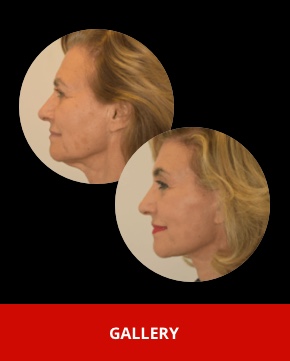Extended deep plane facelift vs deep plane facelift
The technical differences between an extended deep plane facelift and a regular deep plane facelift primarily involve the extent of tissue dissection and the areas of the face that are addressed. Here is a detailed comparison of the two procedures:
Deep Plane Facelift
Technique:
- Incisions: Incisions are typically made along the hairline, around the ears, and sometimes extending into the hair behind the ears.
- Dissection: The dissection plane is deep to the SMAS layer, targeting the deep plane beneath the facial muscles and connective tissues.
- Tissue Release: The surgeon releases the deeper tissues, including the SMAS and the underlying structures, allowing for more effective repositioning of the mid-face, jawline, and neck.
- Repositioning: The deeper layers are repositioned to a more youthful location, providing support and lifting the overlying skin without creating tension on the skin itself.
- Closure: The skin is redraped and excess skin is removed, but the tension is primarily borne by the deeper structures, resulting in natural-looking contours and minimal visible scarring.
Focus Areas:
- Mid-face (cheek area)
- Jawline
- Neck
Extended Deep Plane Facelift
Technique:
- Incisions: Similar to the regular deep plane facelift, with potential for additional or slightly longer incisions to allow for greater access and more extensive dissection.
- Extended Dissection: The dissection plane extends further into the lateral face and sometimes includes the area below the eyes and around the nasolabial folds. The release of deeper tissues is more extensive.
- Additional Tissue Release: The surgeon releases additional deeper tissues, extending the dissection to include the lateral orbital area (cheekbone), nasolabial folds, and sometimes the temporal region.
- Comprehensive Repositioning: The extended release allows for more comprehensive lifting and repositioning of the entire mid-face, including the cheeks, lower eyelids, and nasolabial folds.
- Closure: Similar to the regular deep plane facelift, but with a focus on ensuring all areas that were addressed are appropriately repositioned and supported.
Focus Areas:
- Mid-face (cheek area)
- Jawline
- Neck
- Nasolabial folds
- Cheeks
- Lower eyelids (sometimes)
- Temporal region (sometimes)
Summary of Technical Differences
- Extent of Dissection: The extended deep plane facelift involves a more extensive dissection of the deeper facial tissues, reaching areas not typically addressed by the regular deep plane facelift.
- Areas Addressed: The extended version targets additional areas such as the nasolabial folds, lateral orbital area, cheeks, and sometimes the lower eyelids and temporal region, providing more comprehensive facial rejuvenation.
- Incision Length and Placement: While the incisions are similar, the extended deep plane facelift may require slightly longer or additional incisions to allow for the greater extent of dissection.
- Tissue Release and Repositioning: The extended deep plane facelift involves a more extensive release of the deeper tissues, allowing for more significant repositioning and lifting of the entire mid-face region.
Decision-Making Considerations
When choosing between the two techniques, consider factors such as the extent of facial aging, specific areas of concern, and the desired outcome. Discuss these options thoroughly with your surgeon, who can recommend the most appropriate technique based on your individual needs and facial anatomy. Dr Jason Roth is an otolaryngology trained surgeon who will usually recommend the extended deep plane facelift procedure for most patients to achieve the most optimal results.


